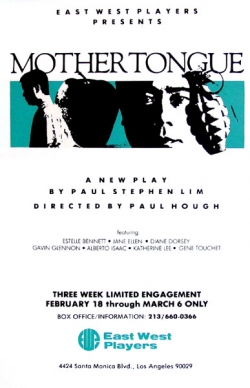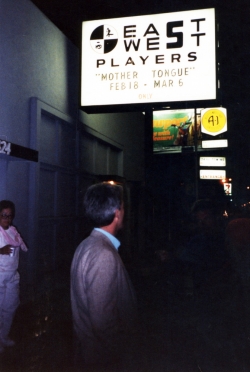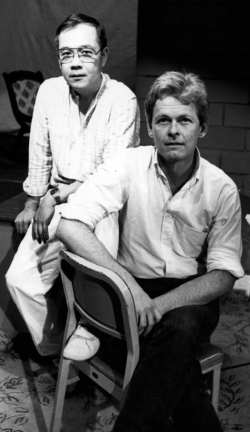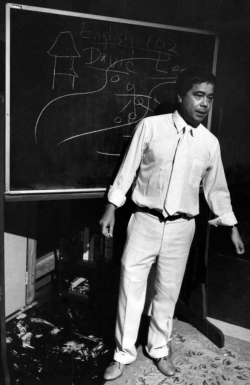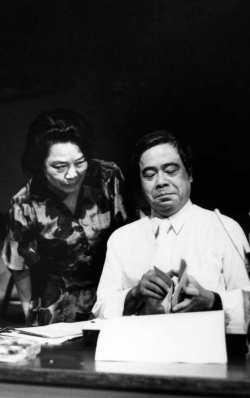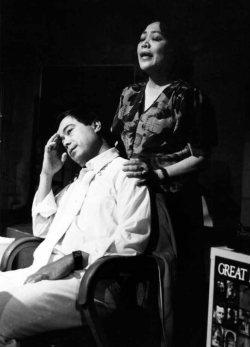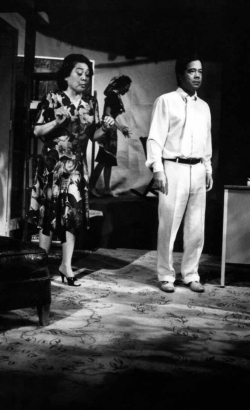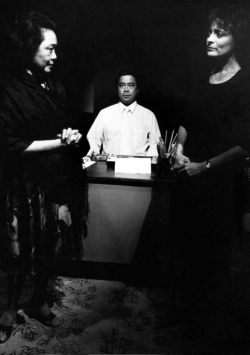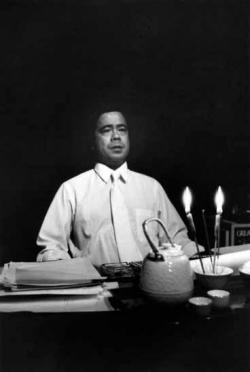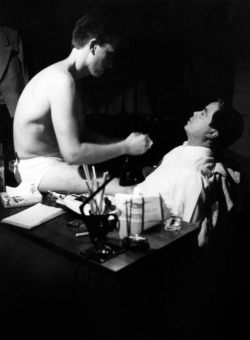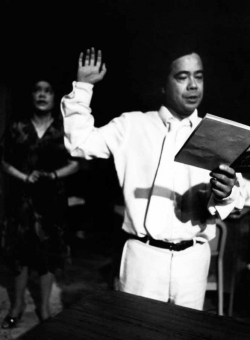Mother Tongue: A Recreation in Two Acts
Images from the Show
Overview
Requirements: 14 characters played by 4F, 3M
Setting: The action alternates between an office and a classroom in a midwestern university. If possible, platforms and a limbo area can also be used for the various flashback sequences.
Plot: David Lee, a Chinese-American writer teaching in the English department at a midwestern university, is at a cross-roads in his life. He has moved out of the house he has been sharing with his partner of nearly twenty years, and he is living temporarily in his office while continuing to teach his classes and working on his new play. The work-in-progress starts out to be about his mother Lilian, a fourteen-year-old child-bride who leaves her parents in China to marry an older man in the Philippines in the late 1930s, but it soon turns out to be about himself as he finds himself undertaking the same sort of journey his mother did forty years ago.
Theme: The nature of language itself, what we lose and/or gain when we give up one language for another; how our thought processes and maybe even our values are determined by the language(s) we speak and write, perhaps even dream in.
Notes: Lilian in this play is played by two women. We meet Young Lilian at age 14, and see Old Lilian in her early 50s. While much of Mother Tongue is autobiographical, not all of it is factual. That said, it should make no difference whether people know me personally or not. Ultimately, the story of David Lee’s mother in her journey from China to the Philippines, and of David Lee himself in his journey from the Philippines to the United States, is the story of many people who leave one country for another, who abandon one culture for another, one language for another.
History: Thanks to Mako, the play was first produced at East West Players in Los Angeles, Feb. 17-Mar. 6, 1988. Paul Hough directed, and Alberto Isaac played the part of David Lee. There was a staged reading at a theatre conference sponsored by the English department at the University of Kansas later the same year, again with Hough directing, and Isaac playing David Lee. The play was subsequently produced by Actor’s Actors Inc. at the Cultural Center in Manila (Philippines), Apr. 20-22, 27-29 and May 18-19, 2001. Chris Millado was the director.
Short scene from the play: David Lee teaches Freshman Composition and Literature at the University of Kansas. The various classroom sequences are organic and integral to the main narrative and action of the play itself. I hope that the scene presented below illustrates this point.
(Scene 6: A week later, the classroom. Lights up on the blackboard already in place. On the table is a batch of tidily-stapled essays. DAVID writes two short sentences on the board–“Lilian sings. David doesn’t.”–then turns around to face the class. He picks up the batch of essays and looks at his watch.)
DAVID: We’ve got a few minutes left, so before I return these gems to you, I’d like to talk briefly about the semicolon, and hope that in future you will know how to use this particular punctuation. (Short pause.) The most common usage of the semicolon is to join two complete sentences. “Lilian sings. David doesn’t.” The period is perfectly acceptable, but it isn’t ideal. It’s too divisive. It chops up what might have been one thought into two independent thoughts. A comma is a no-no, so what are we to do?
We could turn the whole thing into a compound sentence by using a coordinate conjunction: “Lilian sings, but David doesn’t.” “Whenever Lilian sings, David doesn’t.” Or, for that matter, into a complex sentence by using any number of subordinate conjunctions: “Although Lilian sings, David doesn’t. “Because Lilian sings, David doesn’t.”
But what if subordination isn’t what we want? Ahhhh, that’s when we fall back on the semicolon.
(David erases the period between the two sentences on the board and substitutes a large semicolon.)
Think of the semicolon as a period on top of a comma, the halfway point between a period and a comma–not a complete stop, but also longer than a pause, a sort of intermission. (Short pause.) Are there any questions?
(He starts to distribute the essays as the lights slowly fade to black for the end of Act One and the intermission.)
Availability: From Aran Press, and also from the author.


